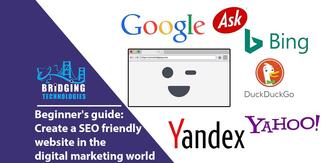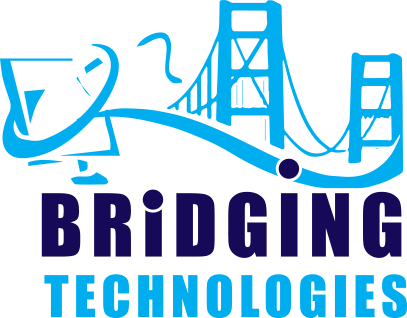Let me guess, you have a digital marketing agency. You designed a website, registered its domain name and hosted it online. Then you try to search it on Google. You realize it is not listed in Google results! What does it take to make it visible? How Google and other search engines like Bing, Yandex and Duckduckgo get your website on their results? How do they look out for your website?
Did you know that almost 3.1 billion searches are performed daily, with the expected increase of 10% every year?
Did you also know that Google is the starting point for 35% of product searches?
If you are in the digital marketing world, these will be very common questions. All these questions will be answered here. But first, let's understand what are these search engines and how they work:
The search engines work to discover, understand and arrange the contents of the internet to provide the most important answers to the questions you asked.
To appear in the SERPs or Search Engine Results Pages, the content must first be available to the search engines. It is probably the most important aspect of Search Engine Optimization (SEO).
The search engines use their algorithm (set of defined instructions) to fulfill their task. The purpose of the search engine algorithm is to present a valid collection of high-quality search results that will answer your query or question as quickly as possible.
You then choose from the search results list, and this action, along with the subsequent operation, then feeds on potential learnings that will impact the search engine rankings in the future.
When a user enters a search query in a search engine, all pages considered to be relevant are listed from the index and the algorithm is used to hierarchically rank the relevant pages in a collection of results.
The algorithms used to rank the most important results are different from one search engine to another. For example, a page that ranks high for a search query in Google does not rank high for the same query in Bing. Search engines also use other relevant data like language, location, device, search history and device type to return the results.
Search engines work differently, and some even hide their methods, but all fall to these three.
a. Crawling
Search engines browse the Internet for information, look over the code or content for each Uniform Resource Locator (URL) they find. It is the discovery process in which search engines use a team of robots (known as crawlers or spiders or bots) to find new and modified content. It could be a web page, audio, an image, a video, a document, location and so forth.
The crawlers begin by retrieving a few web pages, and then follow the links on those web pages to find new links. By jumping along this path of links, the crawler can locate new content and add it to their index. It is a vast database of found links (URLs) to be retrieved later when the searcher is looking for information that the content on that URL is a good match for.
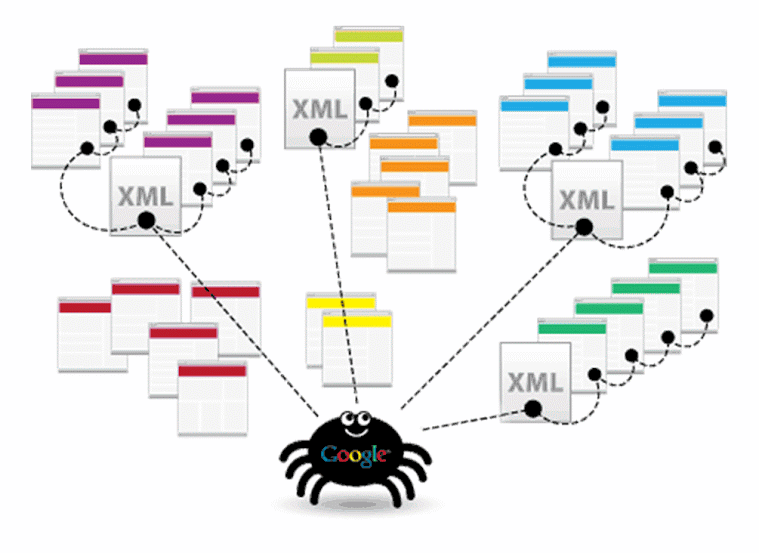
b. Indexing
Search engines store and organize the content found during the crawling process. The content is stored on a very large and special database called INDEX. The index will be used to retrieve all relevant contents related to your question when you perform a search later.
Once a page is in the index, it’s in the running to be displayed as a result of relevant queries.
c. Ranking
When someone searches on Google, for instance “web design agency”, it searches its index for highly relevant content about web design agency or agencies. Then it orders the content in the expectation that the searcher's query will be answered. The process of sorting search results by 'importance' is known as ranking.
You can block search engine crawlers from part or all of your web, or advise search engines to avoid storing those pages in their indexes. While there may be reasons to do this, if you want your content to be found by the searchers, you must first make sure that it is available to the crawlers and it is indexable. Otherwise, it is as nice as it is invisible.
We are now familiar with how search engines work. Let’s list few examples:
- Bing
- Baidu
- Yahoo
- Yandex
- Ask
- DuckDuckGo
- Naver
- AOL
- Seznam
- Ecosia
According to Statista Google tops with 85.86% market share, followed by Bing (6.84%), Yahoo (2.76%), Yandex (0.59%) and Baidu (0.55%). So, this guide will put a little more focus on Google than other search engines.
To make your website visible to Google, you need to know and understand SEO. If you work in or with a digital marketing agency like Bridging Technologies where content creation, SEO services and web design are common services, then this term is unavoidable. SEO is a method that increases the quality and quantity of website traffic to a website or web page from search engines. SEO focuses on unpaid or organic traffic rather than direct or paid traffic.
However, the SERPs have changed over the last few years to give users more straightforward answers and content that is more likely. To keep them on the results page than to push them to other websites.
Also, remember that features such as rich results and Knowledge Panels in search results will improve exposure and provide users with more detail about your business directly in the results.
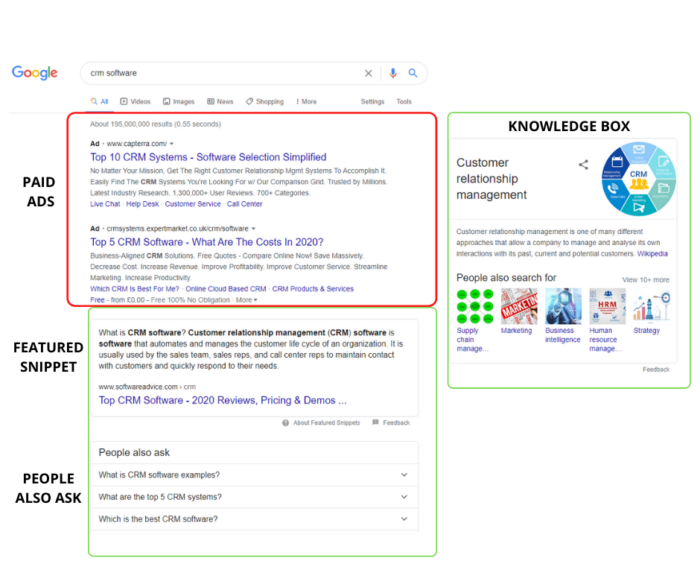
If you are using HTML, CSS and JS to develop your website or the Content Management System (CMS) or you are a content creator. It is time to apply the SEO techniques, whether it's brand-new content, a website or an old one you're enhancing.
1. Off-page Search Engine Optimization
Off-page SEO applies to all you can do beyond your website to help you boost your SERP position. Like social media shares, social media accounts, forums, influencer outreach, and local directories. Others are commenting, guest author, content marketing, newsletters are few examples. In other words, off-page SEO is all the stuff you do off your website or content to get Google to see your website or content as trustworthy and authoritative.
All those examples build a so-called BACKLINKS, also known as "inbound links," "incoming links" or "one-way links" which are links from one website to another website. Google considers backlinks as votes for a particular website. Pages with a high number of backlinks appear to have a high organic rating.

While Google has made thousands of improvements to its algorithm since then, backlinks remain a key ranking aspect.
A website or content has one backlink, what does that mean? For instance, you are a content creator and you have published a content titled “How and Why Digital Marketing is important in today’s business” and your friend has inserted it into his blog. That link on that blog is considered a backlink. Websites can have more than 90 million backlinks.
Or yet, another example: a backlink from a LinkedIn post.
For Google to conclude that your content or website is authentic, the backlinks should come from trusted sites. Never purchase links or spamming blogs, all these are bad tactics.
2. On-page SEO
On-page Search Engine Optimization involves improving your content, keywords, title, website’s meta tags and other elements that are highly considered by search engine bots.
On-page SEO factors include:
Content
“Content is King”, You can optimize all the keywords, descriptions, and internal links you want, but if the material on the content is not good, no one will visit your site.
You can read more about SEO on 5 reasons why SEO is the best strategy for website achievement.
Keywords
Keywords are concepts and themes that describe your content. As far as SEO is concerned, these are the terms and phrases that searchers enter in search engines, often called "search queries."
As a website designer or content creator, you want the keywords on your page to be important to what users are looking for. So that they have a greater chance of finding your content in the results.
Keywords may be wide and far-reaching (usually referred to as "head keywords"), or they may be a more precise mix of many terms—often referred to as "long-tail keywords."
Let’s look at the following example:
You have published content about SEO services, it can be as follows
“Yesterday my friend started SEO services for his website. Web design was not difficult. His SEO services had three stages. He is probably the best SEO expert. He also provides a free SEO consultation in Tanzania “.
Title Tag
The title tag is one of the most significant on-page SEO variables after your actual on-page content.
Specified with title tag as follows:
<title>10 Best SEO Practices in Bridging Technologies</title>
It refers to the title of a web page or the main heading you see in the SERP. Keep it to 65 characters or less (choose your words carefully!) for this title.
Make sure your title has keywords that are also on your webpage. If you are using the CMS (Content Management System) such as Drupal, WordPress and Joomla, you'll find that when creating new content, it automatically generates the URL from the title.
The URL created will be http://www.example.com/10-best-seo-practices-in-bridging-technologies if the post title is “10 Best SEO Practices in Bridging Technologies.”
Meta Description
A meta description is a short description that appears beneath the URL on a SERP and beneath the headline in a social media article. It not only explains the material on that tab, but it's also written to help your website stand out in the SERPs. To ensure that your entire definition appears in search results, keep it under 155 characters.
Example:
<meta name="description" content="Bridging Technologies helps your business growing by applying our digital marketing and custom promotion strategies to create value for your brand."/>
CMS websites have special SEO settings that enable you to fill your description.
Same as your title, a meta description should also contain some keywords to increase your rank.
Alt Text
Since Google can't see images, alt text refers to the term or phrase that can be applied to a picture file to help ensure it gets indexed and so search engines understand what it is.
Let say you have a digital marketing agency with an image in your website that shows an iPhone12. Focusing on your keywords you can save the alt text for that image as follows. "My digital marketing agency purchased a brand-new iPhone 12." That graphic will begin to rank for that phrase in the image results.
Not only that but also remember to save your image files with more descriptive names that also focus on your keywords.
<img alt="My digital marketing agency purchased a brand-new iPhone 12" src=" /brand-new-iphone-12.jpg">
For those who use CMS, uploading your image emphasizes entering alt text.
URL Structure
A well-organized URL structure is critical for today's marketers because it enables search engines to quickly crawl from page to page on your website and makes navigation easier for visitors. Easy-to-understand URLs are more likely to receive clicks and help Google crawl your web. So, include keywords that represent the pages they direct to. Besides, URLs should be short and contain only your primary keyword for that page, with no unnecessary terms.
A CMS-powered website is easy, once you create your title, the system automatically generates a good URL. Refer title tag above.
Following URLs are discouraged on same website:
- www.bridging.co.tz/7-digital-marketing-practises-that-are-good-for-you
- bridging.co.tz/73835319873
- bridging.co.tz/About-us
- bridging.co.tz/Web design
While the above URLs can be structured to:
- www.bridging.co.tz/blog/7-digital-marketing-practises-that-are-good-for…
- www.bridging.co.tz/who-we-are
- www.bridging.co.tz/about-us
- www.bridging.co.tz/web-design
Internal Linking
Any link on your website that links one page to another is known as an internal link. Links are used by both your users and search engines to locate content on your website. Users use links to navigate through your website and find the details they're searching for. Links are also used by search engines to access your website. They won't be able to find a website if it doesn't have any connections to it.
In addition to links on your navigation and breadcrumbs, you can also add links to your content. We're calling those contextual links. Context links point to useful and relevant material for your users. They also help search engines to figure out what content on your site is connected to and to decide the importance of that content. The more links an important page gets, the more important search engines tend to be.
Examples:
- <a href=”http://www.bridging.co.tz/web-design”>Web Design</a>
- My friend once asked me if I can do <a href=”http://www.bridging.co.tz/web-design”>web design</a>
Breadcrumbs
Breadcrumbs are navigational aids that tell visitors where they are on your website and also help Google understand the structure. A breadcrumb is a small text path that appears at the top of a page and shows where the user is on the page, with each move being clickable.
The three different types of breadcrumbs:
1. Hierarchy-Based — shows how many steps gets you back to the Home Page
Home > Blog > Digital Marketing > Web Design
2. History-Based — ordered by where a visitor has been doing on the site
Home > Name of Previous Page > Name of Previous Page > Current Page
3. Attribute-Based — most common on e-commerce sites; show product attributes
Home > Product Area > Style > Material > Size
Breadcrumbs appear in Google search results, providing users with a short description of where a page on your site is located.
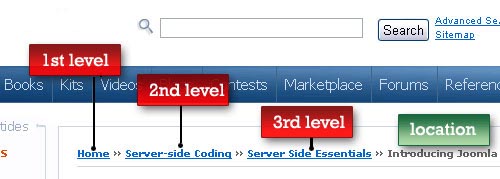
Creating breadcrumbs is no easy task for web developers who code from scratch! Web Frameworks like Yii and Laravel and CMS create breadcrumbs automatically.
XML Sitemap
The XML Sitemap is a text file that lists all of your website's pages. It also contains the publication date and the most recent update date, in addition to the title.
When crawling a website, search engines may refer to the XML sitemap for direction.
Easy XML sitemap optimization: just include the pages that are relevant to your website in your sitemap. These are, in most cases, your websites, articles, and categories.
Tag pages, author pages, and other pages with no original material should not be included in your sitemap.
As soon as a new page is published or an existing page is changed, make sure your sitemap is automatically updated.
Submit your sitemap to Google and Bing using the Google search console and Bing Webmaster, and check the status.
Example:
For CMS users, this is also an easy task since XML sitemaps are automatically generated. For Hard coders, you can use XML sitemaps and include a generated sitemap to your website. Download it and save it in the root folder of your website, which is https://www.bridging.co.tz/sitemap.xml.
Webpage Speed
Although other on-page SEO factors concentrate on content quality and layout, the website's (and its pages') success is also a ranking factor. Users become irritated, exit, and the bounce rate rises when pages take a long time to load or don't make properly on mobile.
You can use this tool to monitor your web page speed.
Schema Markup
Google uses Schema markup to collect data for SERP snippets. There are several types of Schema Markup, some of which are more applicable to a particular target persona than others:
Above are examples of schema markup. The first one is the format of the schema markup. The second one is the blog post with markup that shows a post date.
Google uses Schema markup to collect data for SERP snippets. There are several types of Schema Markup, some of which are more applicable to a particular target persona than others:
- Business Events
- Search Results
- FAQ Page
- News Articles
- Business Function
- Job Posting
- Local Business
You can use a schema markup generator to generate your schema markup. Most CMS generates the markup automatically.
Robots.txt
Robots.txt is a text file in your website's root directory that tells search engines which pages of your site they can crawl and index.
This file's format is very basic, and you won't have to make any changes to it in the vast majority of cases.
Examples:
Sitemap: http://www.bridging.co.tz/sitemap.xml
User-agent: *
Allow: /core/*.svg
Allow: /profiles/*.css$
Disallow: /README.txt
Disallow: /web.config
Disallow: /index.php/admin/
3. Technical SEO
Review your Domain
First of all, your domain name impacts search engines. Domain names are unique, human-readable website addresses. They consist of three parts: a top-level domain (sometimes referred to as an extension or domain suffix), a domain name (or IP address) and an optional subdomain.
The combination of only the domain name and the top-level domain is known as the root domain. The "http://" is part of the URL of the page, but not its domain name, and is known as the "protocol.".
You can register your domain name using the domain registrar example Extreme Web Technologies for .tz domains.
How your domain may impact your website to search engines?
- Make your domain name readable
Search engines have been growing dependent on accessibility and usability as a ranking factor. The easier the domain (or URL) is to read for humans, the better it is for search engines.
Example:
- www.rukwacdninthebridgegaptourismagency.co.tz (not recommended)
- www.rukwatourism.co.tz (recommended)
- www.digitalmarketingagencyintanzania.co.tz (not recommended)
- www.digitalmarketing.co.tz (recommended)
- www.webdesigner.com (recommended)
- Avoid hyphens if possible.
- Focus on subfolders than subdomains.
Examples: blog.bridging.co.tz versus bridging.co.tz/blog
- Use keywords if possible.
Example: touristagency.co.tz and rukwatravels.co.tz for your tourist agency.
SSL (HTTPS)
SSL is used by at least 46,703,423 websites on the Internet, that is according to BuiltWith.
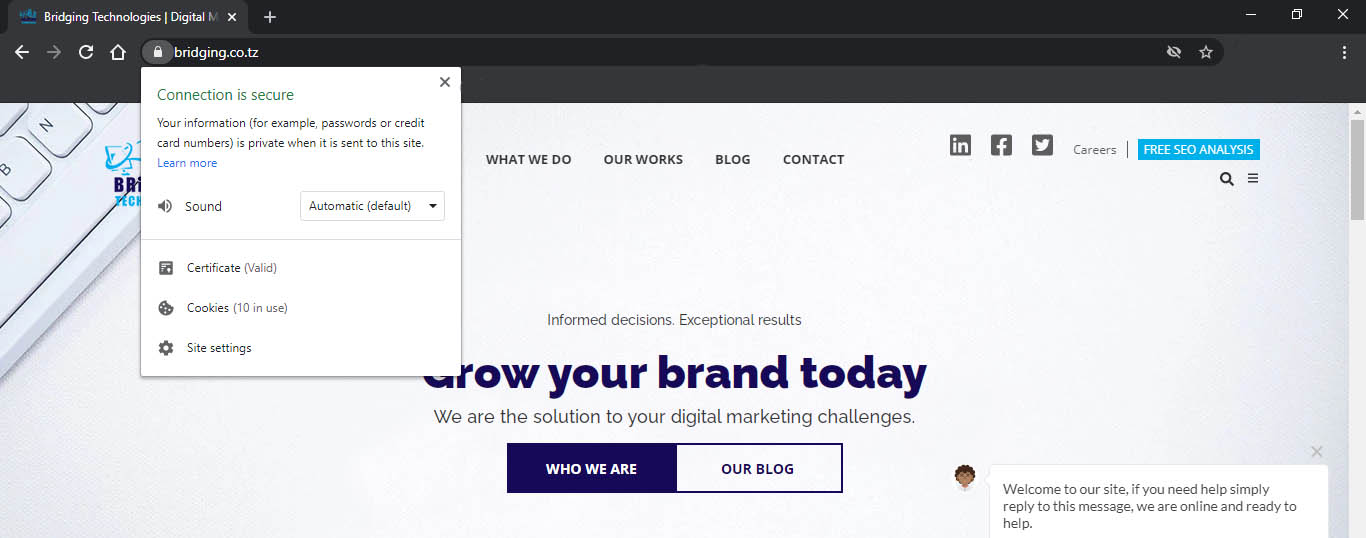
Secure Sockets Layer (SSL) security technology is critical for improving your security, trustworthiness, and visibility. By allowing SSL, you increase the probability that a third party would not stand between your web server and the web browsers of your users. This ensures that information entered on the site is secure. Similarly, Google favors SSL-enabled pages, making it important for ranking.
All URLs of the SSL enabled websites to start with https://
SSL can be purchased through SSL vendors and incorporate into your website. You can use your CMS or htdocs file to force all your website URLs from http://www.bridigng.co.tz to https://www.bridging.co.tz.
Mobile-friendliness
Statista says, there are about 3.8 billion smartphone users worldwide.
Everyone has a smartphone, and it appears that the quest for information is never-ending. Yeah, mobile has changed the world, and having a mobile-friendly website is an important part of having an online presence.
Avoid
Normally, things to avoid will be the opposite of those three main guides above. But, in this case, it is quite different. Whatever you do SEO, the following are discouraged:
Link farming
Link Farm is a website or a group of websites that have been developed for the sole purpose of enhancing the PageRank of another website by connecting to the website from different pages in the Farm Link.
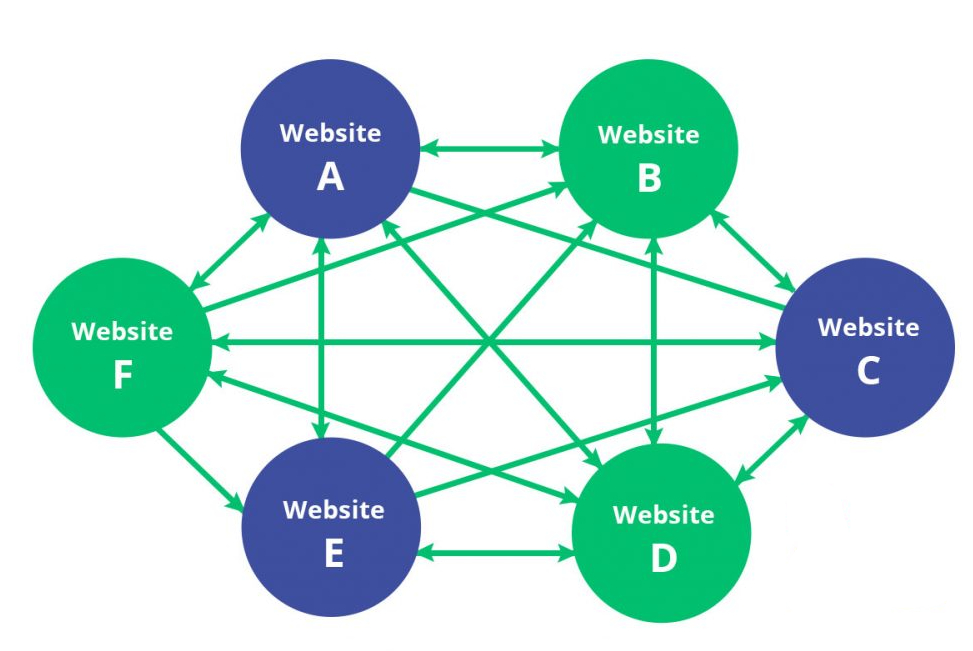
Buying links
Link building is a key ranking element in the search engine. This method is not straight and requires a lot of hard work, commitment and consistency.
Buying links (or paid links) is the method of paying another website to add a link to your website on one of their sites. Usually, the aim is to purchase as many links as they can to further improve their rankings in Google Search results. Remember, too many paid links may decrease your SEO ranking!
Hidden content and links
Hidden content is the text content and links of the website that exist in the source code but are invisible to the visitor. Aware use of secret content that is loaded with relevant keywords is considered to be manipulation of search results by search engine providers and is thus not advised.
Keyword stuffing
If you ask a taxi guy, “can you take me to Bridging Technologies?” and he answers, “Yes, I can take you to bridging technologies. I know Bridging Technologies. Bridging Technologies is a huge company!”. You will get annoyed, and so the search engines.
Keyword stuffing refers to the technique of filling a content or webpage with the same target keyword in hopes of ranking higher on SERPs. The stuffing includes repeating words or phrases unnecessarily, adding terms that are out of context, adding groups of the same keyword, using unrelated keywords to the topic of the page.
Article spinning
It is simply either re-writing already published content manually or using bots.
Cloaking
Cloaking allows you to provide a visitor with completely different content or URLs than the search engine spider.
Example: Presenting two different pages (for visitor and google bot) from one link.
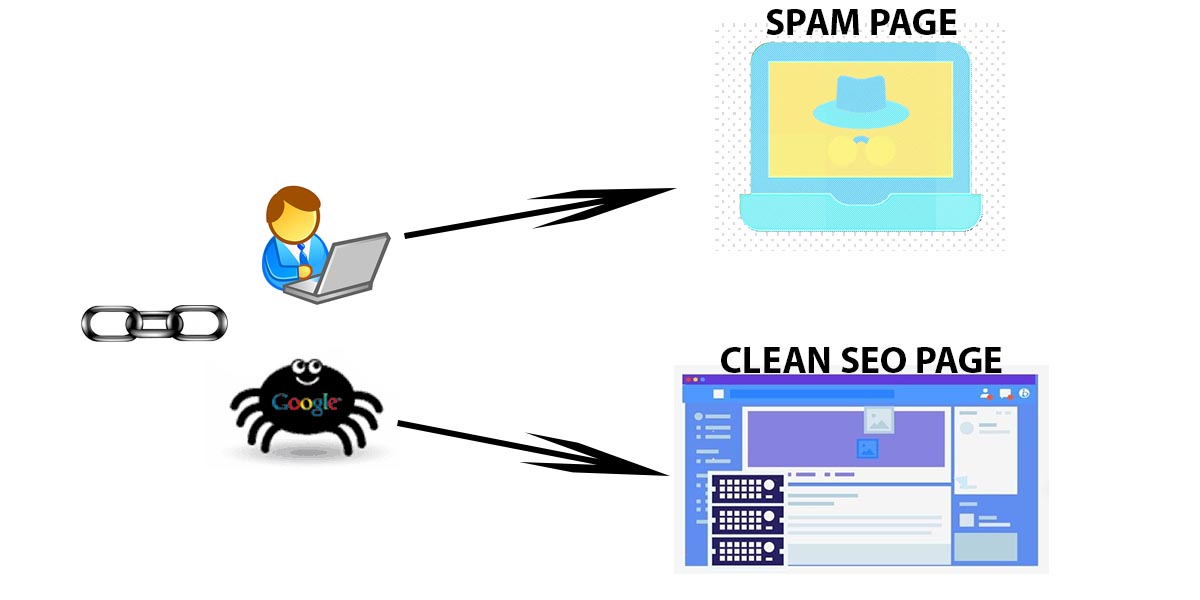
Use of the gateway and the mirror pages
Doorway page also: jump page, gateway page, mirror page) refers to a web page placed in front of the actual page to guide visitors to a particular landing page. This approach is, however, contrary to Google's guidelines.
Therefore
Remember that the ultimate goal of any search engine optimization is to increase visibility and traffic to your company’s website or content.
Look for ways that search engine traffic will benefit you. Now you have a guide, it’s up to you to implement it and wait for results after a month or two.
Go to Google, search your phrase and see if you are ranked!
To dive deeper, feel free to CONTACT the Bridging Technologies team for free SEO consultation.

